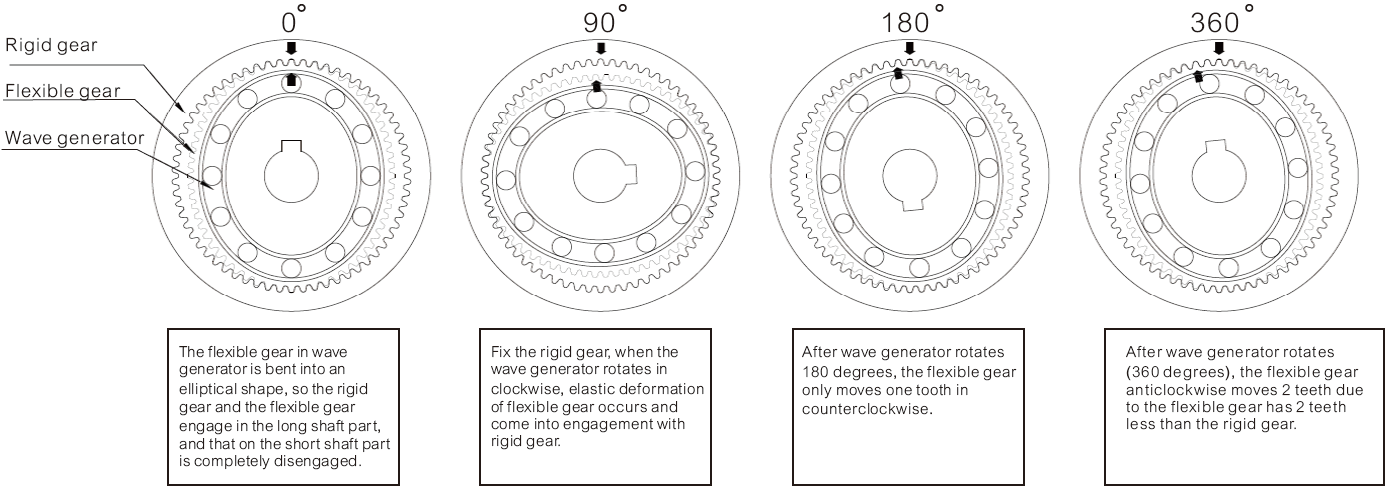Harmonic gear transmission principle
The harmonic gear drive invented by an American inventor, C· W· Musser,. usser in 1955,It is a new type of transmission,which uses the elastic defor mation of flexible components for motion or power transmission. It breaks through the mode of using the rigid component to realize mechanical drive, but with a flexible component instead,thus obtaining a series of special functions that other transmission cannot reach. Its name comes from the deformation process of the intermediate flexible component, which is a symmetrical harmonic. Except that the former Soviet .Union called this kind of transmission"Wave Transmission" or "Flexible Gear Drive", other countries like America, England, Ger many, and Japan all called it "Harmonic Drive’’.
Deceleration principle
The principle of har monic gear transmission deceleration is to use the relative motion of the flexible gear, rigid gear and wave generator (mainly the controllable elastic defor mation of the flexible gear), to realize the motion and power transmission. The elliptical cam in the wave generator rotates in the flexible gear, causing the flexible gear to defor m.When the flexible gear teeth and the rigid gear teeth at both ends of the long shaft of the elliptical cam in the wave generator enter the engagement, the flexible gear teeth at both ends of the shor t shaft are disengaged from the rigid gear teeth. For the teeth between the long shaft and the shor t shaft of the wave generator, the half meshing state that is gradually entering into the meshing along the dif ferent par ts of the circumference of the flexible gear and the rigid gear, is called meshing and the half meshing state that is gradually disengaging is called engaging-out.The continuous rotation of elliptical cam in wave generator makes the flexible gear defor m constantly, w hich causes the teeth at the flexible gear and rigid gear to shift between the states of engaging-in, meshing, engaging-out and disengagement,thus realizing motion transmission from active wave generator to the flexible gear.

